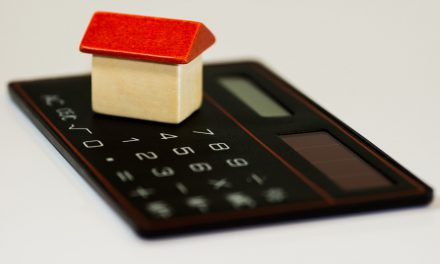This article discusses fire safety requirements for landlords, including smoke detectors, posting fire safety information and security bars.
Fireworks safety
first tuesday wishes you a fun and safe 4th of July holiday, and as a reminder, the state of California permits only “safe and sane” fireworks. Safe and sane fireworks are those inspected and approved by the State Fire Marshal and not defined as dangerous and exempt. [Calif. Health and Safety Code §§12529; 12562]
Prohibited fireworks include: skyrockets, rockets, roman candles, chasers, sparklers over 10″ long or 1/4″ in diameter, torpedoes, friction fireworks, surprise fireworks, and any fireworks containing arsenic, boron, gallates or gallic acid, chlorates, magnesium, mercury salts, titanium, picrates or picric acid, thiocyanates, phosphorus, zirconium, or gunpowder. [Health & S C §12505]
Fireworks safety laws are also enforced to different degrees on the city and/or county level, so please contact your local fire department to check on the legal status and use requirements of specific fireworks.
For more information on fireworks, please visit the following websites:
www.fireworks-safety.com – checks the legal status of fireworks in your California county and also offers a fire safety kids’ page;
www.fireworksafety.com – provides safety tips for selecting and displaying fireworks; and
osfm.fire.ca.gov/fireworks.html – the official site of the California State Fire Marshal, including a handbook on safe and sane fireworks.
Smoke detectors, security bars and safety information
A residential apartment building contains state-approved smoke detectors in each individual unit and in the common areas.
Later, a tenant informs the landlord the smoke detector in his unit does not operate even with new batteries.
The landlord and his manager do not repair or replace the broken smoke detector. Later, a fire breaks out in the tenant’s unit during the night.
The tenant is unaware of the fire until he is injured and his property is damaged due to the defective smoke detector.
The tenant claims the landlord is liable for his losses since the landlord has a duty to repair or replace the defective smoke detector on notice from the tenant.
Is the landlord liable for property damage and personal injuries caused by the defective smoke detector?
Yes! On receiving notice that the smoke detector is inoperable, the landlord is required to promptly repair or replace it. [Calif. Health and Safety Code §13113.7(e)]
Further, a landlord will be subject to a $200 penalty for each failure to:
install a smoke detector in each unit and in common areas as required; and
repair or replace a faulty smoke detector on notice from the tenant. [Health & S C §13113.7(f)]
Tenant’s duty to notify
If a smoke detector does not work, the tenant is responsible for notifying the landlord or property manager. | Smoke detectors are required to be installed and maintained in all dwelling units intended for human occupancy, including single-family residences, duplexes, apartment complexes, hotels, motels, condominiums and time share projects. [Health & S C §§13113.7(b); 13113.8] |
The smoke detector must be in operable condition at the time the tenant takes possession. [Health & S C §13113.7(e)]
If a smoke detector does not work when tested by the tenant, the tenant is responsible for notifying the landlord or property manager. The landlord is not obligated to investigate whether detectors are operable during the occupancy.
If the tenant does not notify the landlord about an inoperable smoke detector and the landlord is unaware of the condition, the landlord is not responsible for injuries caused by the faulty smoke detector. [Health & S C §13113.7(e)]
To repair or replace a faulty smoke detector, the landlord may enter the unit 24 hours after serving a written notice on the tenant of his intent to enter, unless the tenant gives permission for a prior entry. [Health & S C §13113.7(e); see first tuesday Form 567]
Duty to install and maintain
An ordinary battery-operated smoke detector installed according to the manufacturer’s instructions satisfies the requirement for both single-and multiple-unit dwellings, unless another type is required by local ordinances. [Health & S C §13113.7(a)]
For example, some local ordinances require the smoke detector to receive its power from the building’s electrical system.
To determine the smoke detector requirements for a property, the landlord can contact the local fire department or the county fire planning department.
In apartment units and other multiple-unit dwellings, such as condominiums, smoke detectors must also be installed in the common stairwells. The apartment landlord and his property manager are responsible for installing and maintaining smoke detectors in both the common stairwells and the individual units. [Health & S C §13113.7(c)]
Posting fire safety information
The landlord of an apartment building must provide emergency fire safety information to all tenants if the building consists of:
two or more stories;
three or more units; and
a front door which opens into an interior hallway or lobby area. [Health & S C §13220(c)]
The information must be on signs using international symbols. The signs must be located:
at every stairway and elevator landing;
at the intermediate point of any hallway exceeding 100 feet in length and all hallway intersections; and
immediately inside all public entrances. [Health & S C §13220(c)(1)]
Further, the landlord must provide fire information to all tenants through brochures, pamphlets or videotapes, if any of these are available, or conform to regulations adopted by the State Fire Marshal. [Health & S C §13220(c)(2)]
If the landlord negotiates the lease or rental agreement in a language other than English, the required information provided to the tenant must be in English, international symbols and the four most common foreign languages in California. [Health & S C §13220(c)(3)]
Editor’s note – A consumer-oriented brochure in English, international symbols and the four most common foreign languages was to be available from the State Fire Marshal by July 1, 1996. [Health & S C §13220(d)]
However, this model brochure is still not available.
The State Fire Marshal has adopted California Code of Regulations Title 19 §3.09 concerning the dissemination of fire information to tenants in hotels, motels, office buildings and high-rises. Health and Safety Code §13220 addresses these issues for tenants in apartment complexes. However, information does not exist as to which four languages will be used to translate the fire information.
If a landlord has any questions about the enforcement of regulations or the requirements for posting and informing tenants of fire information, he should contact his local fire department or the county fire planning department.
The codes and regulations are enforced on a local level, and each county or city may have different requirements for complying with the fire information regulations.
Emergency procedures for office buildings
Emergency procedures and information for office buildings of two or more stories must be provided to the building’s occupants. [Health & S C §13220(a)]
The emergency procedures information for an office building of two or more stories may be published in the form of literature, pamphlets, etc., and must be available to all persons entering the building as well as located immediately inside all entrances to the building. [19 California Code of Regulations §3.09(a)(1)]
In lieu of literature, a floor plan providing emergency procedures must be posted at every stairway landing, elevator landing, and immediately inside all public entrances. [19 CCR §3.09(a)(2)] For high-rise structures, fire safety requirements include: | Emergency procedures information for an office building of two or more stories must be available to all persons entering the building. |
posting emergency procedures on a floor plan at every stairway landing, elevator landing, and immediately inside all public entrances; and
appointing a Fire Safety Director to coordinate fire safety activities, train employees in the building, develop an emergency plan, etc. (which is also required of operators of hotels, motels and lodging houses). [19 CCR §3.09(c), (d)]
A high-rise structure is a building rising more than 75 feet above the lowest floor level providing access to the building. [Health & S C §13210(b)]
Release mechanism in security bars
Security bars on residential property must have release mechanisms for fire safety reasons. The release mechanisms are not required if each bedroom with security bars contains a window or door to the exterior which opens for escape purposes. [Health & S C §13113.9]
Also, the owner of an apartment house must install exit signs that can be felt or seen near the floor of the exit. [Health & S C §17920.8]
Editor’s note – Any questions concerning fire safety requirements or whether an owner has properly complied with the requirements should be directed to the local fire department or the county fire planning department. Some departments provide checklists of requirements which must be met.


















